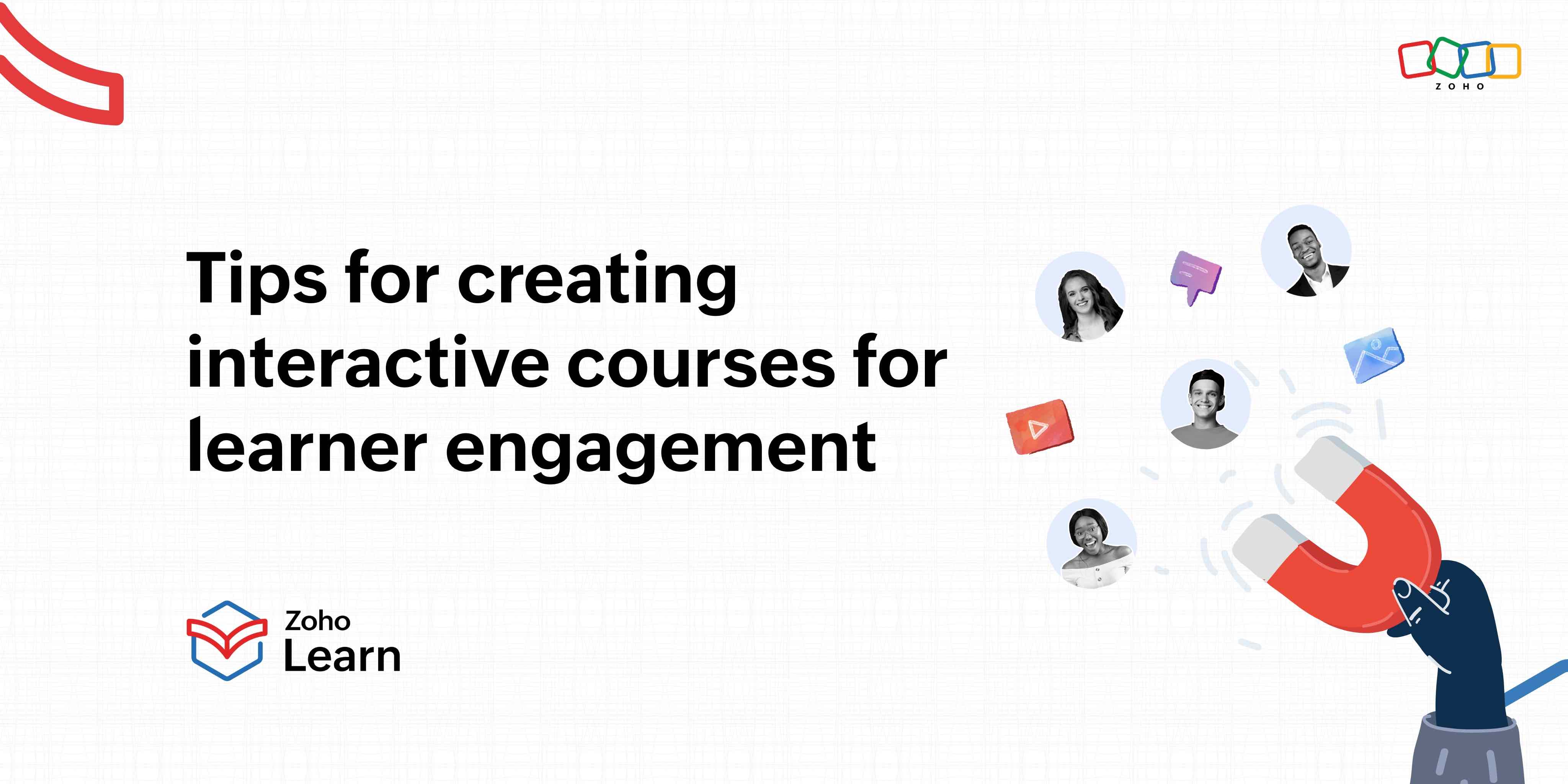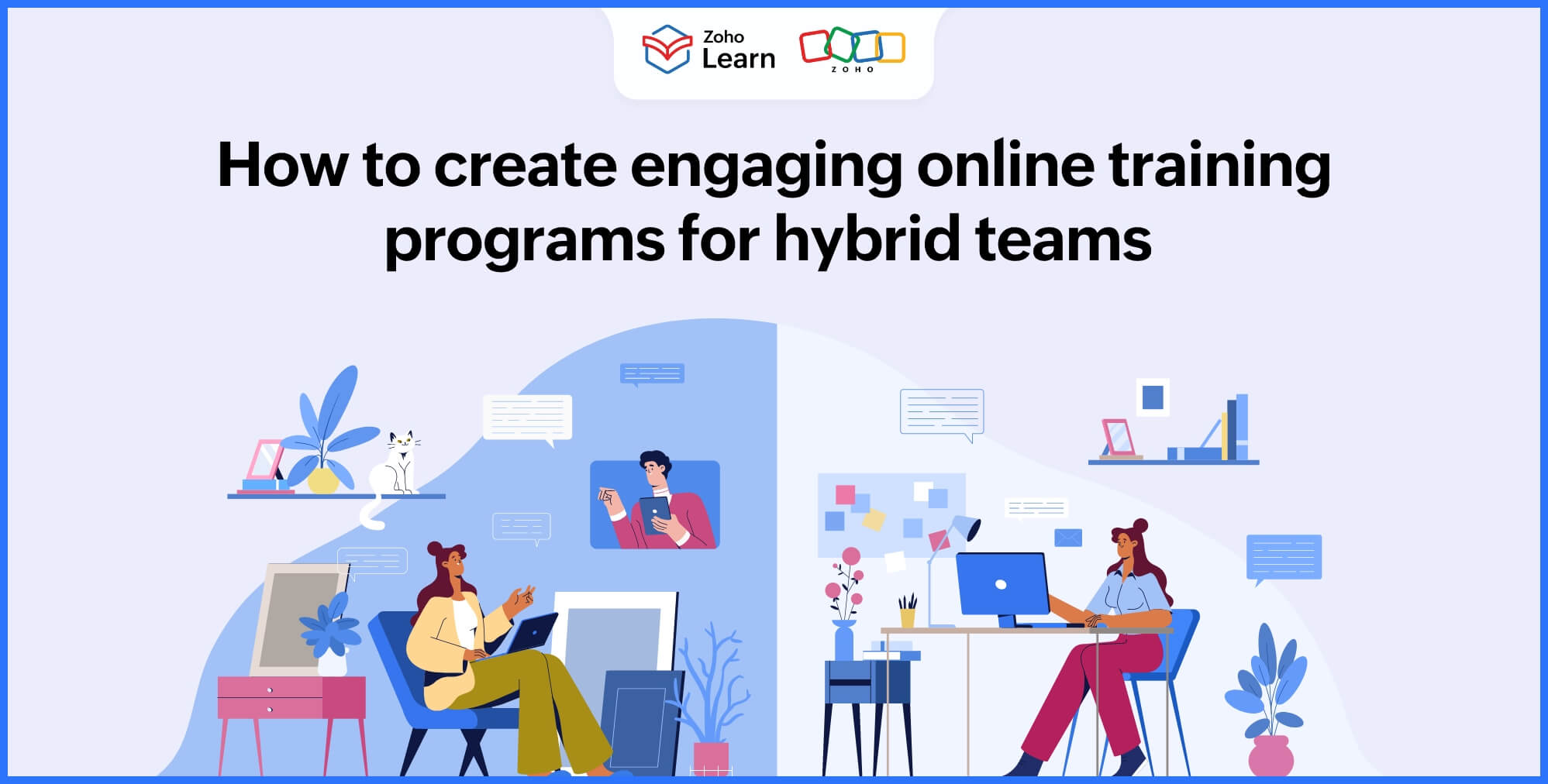Tips for creating interactive courses for learner engagement
- Last Updated : January 8, 2024
- 521 Views
- 3 Min Read

Traditional courses are often no longer sufficient to capture attention and foster engagement among learners. To ensure successful knowledge transfer, course instructors need to change their teaching methods to suit the modern learner. Offering a dynamic and engaging learning experience keeps students motivated and committed to their learning. In this blog post, we'll explore some valuable tips for creating interactive courses that promote learner engagement.
Incorporate interactive elements and multimedia
Incorporating interactive components not only enhances the appeal and involvement in the learning process, it also helps learners better retain the information presented. Diversify your course by employing a range of media like videos, quizzes, simulations, and case studies. Mix and match these elements to break the monotony of traditional learning, catering to various learning styles and preferences.
Use clear navigation and user-friendly design
Creating intuitive paths within the course makes it easy for learners to move between sections or modules effortlessly. This involves placing menus, buttons, or links in easily recognizable locations, ensuring learners can swiftly access different parts of the course without confusion. When the design is user-friendly, learners can focus more on absorbing the content rather than struggling with navigating through the course.
Gamify your course
Gamification adds an element of fun and competition to learning, making it more engaging. Integrate game elements like badges, leaderboards, and rewards to inspire and maintain learner motivation and participation.
Foster collaboration
Incorporate collaborative activities and discussion boards to encourage learners to interact with each other. Peer learning can be a powerful tool for learners to learn from their peers' diverse perspectives and experiences. Encourage learners to share their experiences, insights, and questions, creating a sense of community within the course.
Use real-life applications
Relate course content to real-life scenarios that learners can easily connect with. Practical applications of knowledge are more engaging and more likely to be retained. You can use case studies, examples, and real-world problems to illustrate how the concepts and skills learned can be used in their jobs.
Offer flexible learning methods
Different learners have different schedules and learning preferences. To accommodate this, provide flexibility in your course design. Offer both synchronous and asynchronous elements, allowing learners to engage when it's most convenient for them. Incorporate on-demand resources, like video recordings of live sessions or downloadable materials, for learners to access at their own pace.
Personalize the learning
Personalization is key to learner engagement because it can help learners feel more connected to the course content. Use learner data and feedback to tailor content and experiences to individual needs and preferences. Adaptive learning platforms can help by adjusting the difficulty and content of the course based on a learner's progress and performance.
Provide regular feedback
Continuous feedback is essential for learner improvement. Offer timely and constructive feedback on assignments, quizzes, and discussions. Encourage self-assessment and reflections based on the feedback, helping learners track their progress and make necessary adjustments in their learning journey.
Analyze and improve
After delivering your course, collect feedback from your learners and analyze learner engagement to identify areas for improvement. Use this data to make necessary changes and updates to your course materials and design to ensure that it remains relevant and engaging.
Make learning mobile-friendly
In today's mobile-focused age, it's vital to tailor your e-learning courses for mobile devices, making them easily accessible and adaptable. This means crafting flexible layouts that adjust to different screen sizes to ensure learners can access courses anywhere and boost flexibility and accessibility.
Conclusion
To generate engaging courses that stimulate learner involvement, it's essential to plan and devise a strategy for both creating and delivering the course content. By understanding your audience, establishing clear objectives, and leveraging suitable tools, you can provide an enriching learning experience that keeps your learners motivated and excited to learn.


